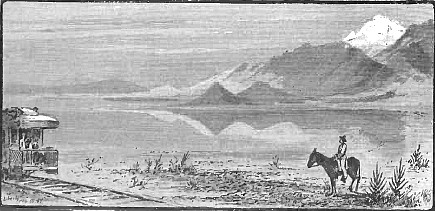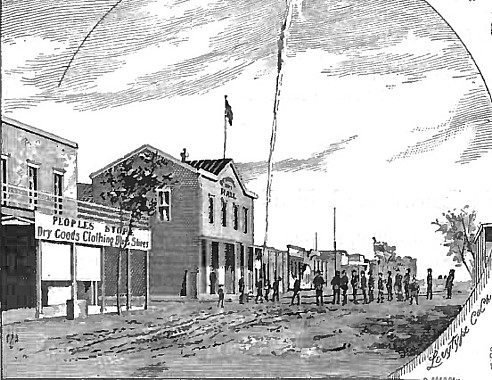The large value of the mineral discoveries of the Walker party had prompt appreciation in the mind of Gen. Jas. H. Carleton, commanding the military department of New Mexico, whose letters on the subject the author has been happy in finding. One private communication, to Gen. H. W. Halleck, then in command of the army, told, under date of June 14, 1863, of the receipt in Santa Fe of two letters, by Chief Justice Benedict ''from a kinsman who is a member of a prospecting party which left the Rio Grande under the leadership of old Captain Walker of Rocky Mountain and California celebrity." The general tells that he has seen native gold that had been sent to Judge Benedict, that it was coarse and of the first quality. Carleton suggested immediate action by the military arm and an expedition over the Whipple road of two companies of California volunteers, for which he would employ Walker as guide, and the establishment of a post for the protection of the miners. He advised also the mapping of the region.
Carleton on June 22 wrote Walker himself, telling that Surveyor-General Clark of New Mexico soon would visit the new gold fields and asking that the old scout return with Clark to Albuquerque to serve as guide for the troops that would be sent to found a permanent post. The letter was very cordial in tone and offered all good wishes and substantial support, assuring Walker that he and his party deserved substantial success and large reward for the toil, hardships and danger that had been encountered. On the same date in June the general ordered Captain N. J. Pishon of the First California Cavahy from Fort Craig with his command to serve as escort for the surveyor-general. The captain was directed to take a supply of gold washing implements and to have his men wash the gulches on arrival, to accurately determine the richness of the sands. On the report returned would depend the permanent occupation of the section, though Carleton prophesied that Piston's report would excite a veritable revolution.
The surveyor-general bore the letter to Walker, and himself received a very readable communication from the general, who gave him good advice concerning the dangers and difficulties of his trip. To him Carleton commended none other than our old pioneer friend Bob Groom, "who last fall came from the new gold diggings on the Colorado River, ascending Williams Fork to the San Francisco Mountains and thence in by Zuiii to Fort Wingate and Albuquerque. Groom was commended as a guide or packer, anxious to return to the gold field he had passed, and as a gentlemanly and intelligent man, in destitute circumstances, but worthy of consideration, kindness, confidence and help.
Though the surveyor-general's stay at the gold fields was short, it was not till the middle of September that he returned to Santa Fe, reporting that the country visited was rich in gold, silver, cinnabar and copper, even compared with California. General Carleton had issued instructions for the prospecting of all his department, something that would have been done in any ease, for most of his soldiers were old California miners. On the Prieta affluent to the Gila gold had been found that washed 40 cents to the pan, as well as argentiferous galena worth a dollar a pound. Rich copper ore, abounding in gold, "in quantity enough to supply the world," had been found near the head of the Gila. Especially interesting was a reference, found in a letter written by the general to Secretary Salmon P. Chase of the treasury department, accompanied by two specimens of pure gold from the top of Antelope Mountain, a discovery that had been referred to by Mr. Clark. These specimens had been sent to the general, he wrote, "by Mr. Swilling, discoverer of the new gold fields near the San Francisco Mountains. If it be not improper, please give the larger piece of the gold to Mr. Lincoln. It will gratify him to know that Providence is blessing our country, though it chasteneth." The general sagely added: "Now, would it not be wise for Congress to take early action in legislating for such a region, to open roads, to give force to subjugate the Indians, to give mail facilities, to claim rights of seigniorage in the precious metals, which will help us pay our debts, etc.?" All of which shows that General Carleton was one of the earliest of Arizona boosters.
Conner of the Walker party tells that the surveyor-general's party left five large wagons behind near the site of Prescott, to be used later, with some of the Walker mules attached, iu transporting goods from California. The advent of the new territorial government gave stimulus to immigration and it is told that in 1865 at least 3,000 placer miners, favored by a wet season, were washing the sands of the gulches around Prescott. Within the mining population was a large admixture of Californians, accustomed to doing things in an orderly manner, so as early as December 27, 1863, a meeting was held at Goodwin City, a mile south of the site of Prescott, for the organization of a mining district.
Return
to The Arizona Page:
Arizona Gold Rush Mining History



